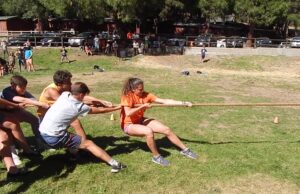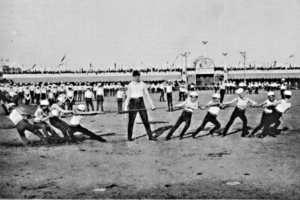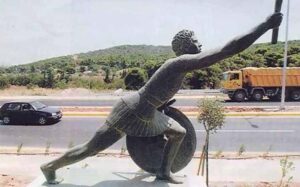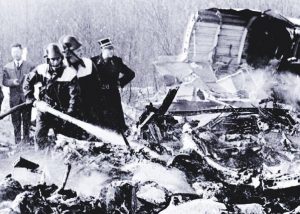olympics
 Sports at the Olympics have changed over the years. Things have been added that we would never have expected, and some didn’t even seem like they were a sport exactly. One of those strange “sports” that were once a part of the Olympics was the Tug-of-war. It is sport-like I guess, so that at least puts it in the right classification. It is comprised of two teams, who go against each other, so in that way, it fits too. Still, it has always seemed more like a revenge battle than an Olympic sport to me. Nevertheless, once a sport is voted in by the International Olympic Committee (IOC), it becomes an official sport in the Olympics. There are requirements, of course. The IOC requires “that the activity have administration by an international nongovernmental organization that oversees at least one sport. Once a sport is recognized, it then moves to International Sports Federation (IF) status.” A sport can be taken out of the Olympics too, and probably just as easily.
Sports at the Olympics have changed over the years. Things have been added that we would never have expected, and some didn’t even seem like they were a sport exactly. One of those strange “sports” that were once a part of the Olympics was the Tug-of-war. It is sport-like I guess, so that at least puts it in the right classification. It is comprised of two teams, who go against each other, so in that way, it fits too. Still, it has always seemed more like a revenge battle than an Olympic sport to me. Nevertheless, once a sport is voted in by the International Olympic Committee (IOC), it becomes an official sport in the Olympics. There are requirements, of course. The IOC requires “that the activity have administration by an international nongovernmental organization that oversees at least one sport. Once a sport is recognized, it then moves to International Sports Federation (IF) status.” A sport can be taken out of the Olympics too, and probably just as easily. 
Tug of War was part of the Olympic schedule between 1900 and 1920. It was part of 5 different Summer Olympic Games. It seems such an odd thing to have a Tug-of-war…a school battle game as a serious part of such prestigious games. Nevertheless, here they were. The nation to win the most medals in Tug-of-war was Britain, having taken five medals. They were followed by the USA with three.
Tug-of-War was removed from the Olympic Program after the 1920 Games along with 33 other sports. The reason behind the removals was that the IOC decided there were too many sports and too many participants competing, so the decision was made to remove a number of sports, and unfortunately, one of those was Tug-of-War. I’m not sure why that seems sad to me, except that it had persevered up to that point, only to be pulled out of the Olympics…THE OLYMPICS!!  Somehow, it seems unfair. Such a big event, and to think that this sport that Tug-of-War was dropped from the Olympic program. Nevertheless, after Antwerp 1920, it was dropped. Leading up to the 1920 removal, was the 1912 Olympics when a number of countries withdrew from the Tug-of-War competition. That meant that the only match that occurred was between Great Britain and Sweden. The battle was a hard-won victory for Sweden, who eventually won after the British team sat down in the second pull, leading to their disqualification. That was the end of it. It just seems so sad to me…because at one time, it was an accepted event, a worthy battle, and now it was over.
Somehow, it seems unfair. Such a big event, and to think that this sport that Tug-of-War was dropped from the Olympic program. Nevertheless, after Antwerp 1920, it was dropped. Leading up to the 1920 removal, was the 1912 Olympics when a number of countries withdrew from the Tug-of-War competition. That meant that the only match that occurred was between Great Britain and Sweden. The battle was a hard-won victory for Sweden, who eventually won after the British team sat down in the second pull, leading to their disqualification. That was the end of it. It just seems so sad to me…because at one time, it was an accepted event, a worthy battle, and now it was over.
 When we think of runners, most of us are impress, and rightly so. To run a race…especially a marathon…is an amazing feat. A marathon is 26.2 miles, but do you know why that is? Supposedly, the length of the race is a “tip of the hat” to a man named Pheidippides. According to legend, Pheidippides, an Athenian soldier, witnessed the combined Athenian and Spartan army’s victory over the Persians at Marathon. Then he supposedly ran 26 miles to Athens to deliver the news. When he arrived, he informed the Athenians, and then promptly perished of exhaustion. In his honor, marathon runners run 26.2 miles to remember that amazing feat, hoping not to share his fate in doing so. Another legend claims that the extra 0.2 miles were added during the 1908 Olympics so the race would end in front of Princess Mary’s pavilion. I’m not sure about the addition of the 0.2 miles, but the reality is that Pheidippides ran a lot further than 26 miles in his “death run” to spread the news of victory.
When we think of runners, most of us are impress, and rightly so. To run a race…especially a marathon…is an amazing feat. A marathon is 26.2 miles, but do you know why that is? Supposedly, the length of the race is a “tip of the hat” to a man named Pheidippides. According to legend, Pheidippides, an Athenian soldier, witnessed the combined Athenian and Spartan army’s victory over the Persians at Marathon. Then he supposedly ran 26 miles to Athens to deliver the news. When he arrived, he informed the Athenians, and then promptly perished of exhaustion. In his honor, marathon runners run 26.2 miles to remember that amazing feat, hoping not to share his fate in doing so. Another legend claims that the extra 0.2 miles were added during the 1908 Olympics so the race would end in front of Princess Mary’s pavilion. I’m not sure about the addition of the 0.2 miles, but the reality is that Pheidippides ran a lot further than 26 miles in his “death run” to spread the news of victory.
For that reason, the real Pheidippides probably wouldn’t have been impressed with someone who ran just 26.2 miles. That would have been child’s play to him. In reality, Pheidippides ran about 300 miles over the course of two days. It’s no wonder he passed away from exhaustion at the end of such a run. Pheidippides was a hemerodromos, or a military long-distance runner. Basically, he was a courier, but these days couriers use a  bicycle or car to carry their messages. Nevertheless, in ancient times, runners were the most efficient way to transmit messages over long distances, but Pheidippides’s legendary run was much, much longer than the average run. In fact, it was a “death run.”
bicycle or car to carry their messages. Nevertheless, in ancient times, runners were the most efficient way to transmit messages over long distances, but Pheidippides’s legendary run was much, much longer than the average run. In fact, it was a “death run.”
The actual task assigned to Pheidippides was to run from Athens to Sparta to ask for more soldiers to be sent. It was a task he carried out, and the Spartans agreed. However, they refused to fight until there was a full moon, as was their battle custom. That was six days away, and would be of no help, since the loss of life by then would be too great. So, Pheidippides turned around and ran back to Athens to inform his superiors of the delay. It reportedly took him two days to cover 300 miles, and it was at the end of this run that Pheidippides expired.
Supposedly, it was a different runner entirely who ran from Marathon to Athens to deliver the news about the victory. While remaining anonymous, this runner apparently still perished at the end of his journey, which is why his shorter run is still remembered. I suppose that does make the marathon a treacherous and dangerous race. Over time, Pheidippides’s ultra-marathon was combined with the anonymous runner’s feat. Maybe they thought it was impossible for a man to run 300 miles in two days, and since I’m not runner, I really couldn’t  say. For me, while I can and have regularly walked 10 to 15 miles in a day, to run even a mile would be a likely impossibility, so I have great respect for anyone who runs any distance, much less a marathon or even a half-marathon. I am not surprised that these men died at the end of their runs. Quite possibly, their water and even food supply was somewhat limited during their runs, and since I know how tired I am after walking 10 to 15 miles, I can almost imagine the exhaustion after running a marathon or half-marathon, but to run 300 miles over two days, well suffice it to say I would have dropped before the first day ended…which is probably why I don’t run…unless it is to get away from danger, hahaha!!
say. For me, while I can and have regularly walked 10 to 15 miles in a day, to run even a mile would be a likely impossibility, so I have great respect for anyone who runs any distance, much less a marathon or even a half-marathon. I am not surprised that these men died at the end of their runs. Quite possibly, their water and even food supply was somewhat limited during their runs, and since I know how tired I am after walking 10 to 15 miles, I can almost imagine the exhaustion after running a marathon or half-marathon, but to run 300 miles over two days, well suffice it to say I would have dropped before the first day ended…which is probably why I don’t run…unless it is to get away from danger, hahaha!!
 As the world is watching the 2018 Winter Olympics, officially known as the XXIII Olympic Winter Games and commonly known as PyeongChang 2018, looking at the hope for gold in this group of young talented athletes, I have been thinking back to another group of young talented athletes…athletes that would never get the chance to realize their dreams. Yes, this group had won gold before, so they were not new to the world of competition, but their hopes of any future gold were crushed forever on February 15, 1961, when they were on their way to the 1961 World Figure Skating Championships in Prague, Czechoslovakia.
As the world is watching the 2018 Winter Olympics, officially known as the XXIII Olympic Winter Games and commonly known as PyeongChang 2018, looking at the hope for gold in this group of young talented athletes, I have been thinking back to another group of young talented athletes…athletes that would never get the chance to realize their dreams. Yes, this group had won gold before, so they were not new to the world of competition, but their hopes of any future gold were crushed forever on February 15, 1961, when they were on their way to the 1961 World Figure Skating Championships in Prague, Czechoslovakia.
On that day, the entire 18 member United States figure skating team, along with the 16 people who were accompanying them, which included family, friends, coaches and officials, as well as the crew and 38 people who were not with the figure skating team, died when the plane went down around 10am in clear weather while attempting to make a scheduled stopover landing at the Belgian National Airport in Brussels. One person on the ground, a farmer working in the field where the Boeing 707 crashed in Berg-Kampenhout, several miles from the airport, was killed by some shrapnel. Investigators were unable to  determine the cause of the crash, although mechanical difficulties were suspected.
determine the cause of the crash, although mechanical difficulties were suspected.
Killed in the crash was 16 year old Laurence Owen, who had won the U.S. Figure Skating Championship in the ladies’ division the previous month. She was featured on the February 13, 1961, cover of Sports Illustrated, which called her the “most exciting U.S. skater.” Bradley Long, the 1961 U.S. men’s champion, also perished in the crash, as did Maribel Owen (Laurence’s sister) and Dudley Richards, the 1961 U.S. pairs champions, and Diane Sherbloom and Larry Pierce, the 1961 U.S. ice dancing champions. Also killed was 49-year-old Maribel Vinson-Owen, a nine-time U.S. ladies’ champion and 1932 Olympic bronze medalist, who coached scores of skaters, including her daughters Maribel and Laurence, and Frank Carroll, who went on to coach the 2010 men’s Olympic gold medalist Evan Lysacek and nine-time U.S. champion Michelle Kwan. The crash was a tragedy that devastated the U.S. figure skating program and meant the loss of the country’s top skating talent. Prior to the crash, the U.S. had won the men’s gold medal at every Olympics since 1948…when Dick Button became the first American man to do so, while U.S. women had claimed Olympic gold in 1956 and 1960. After the crash, an American woman named Peggy Fleming would be the next to win, but she would not capture Olympic gold until 1968, while a U.S. man, Scott Hamilton would not do so until 1984. The incident was the  worst air disaster involving a U.S. sports team until November 1970, when 37 players on the Marshall University football team were killed in a plane crash in West Virginia.
worst air disaster involving a U.S. sports team until November 1970, when 37 players on the Marshall University football team were killed in a plane crash in West Virginia.
Shortly after the 1961 crash, the U.S. Figure Skating Memorial Fund was established. To date, it has provided financial assistance to thousands of elite American skaters. In 2011, the 50th anniversary of the tragedy, the 18 members of the 1961 figure skating team, along with the 16 people traveling with them to Prague, were inducted into the U.S. Figure Skating Hall of Fame in Colorado Springs, Colorado.

